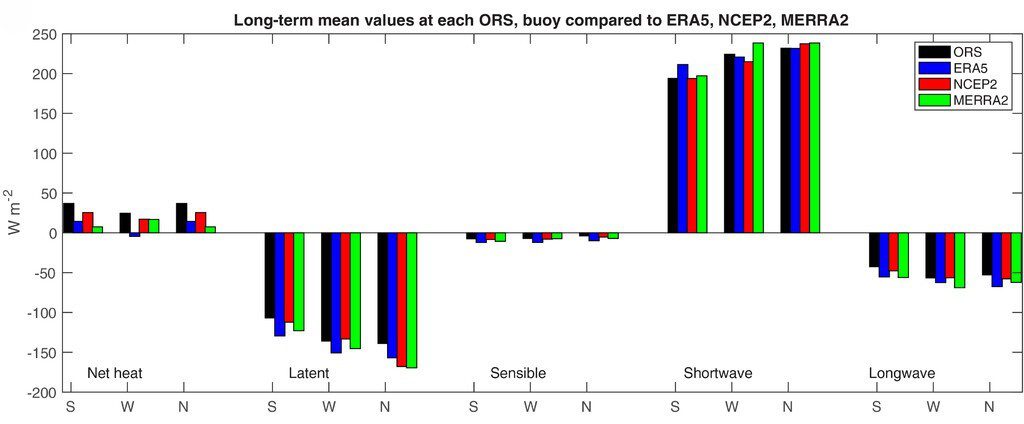Ocean surface radiation measurement best practices
Riihimaki, L., Cronin, M., Acharya, R., Anderson, N., Augustine, J., Balmes, K., Berk, P., Bozzano, R., Bucholtz, A., Connell, K., Cox, C., di Sarra, A., Edson, J., Fairall, C., Farrar, J., Grissom, K., Guerra, M., Hormann, V., Joseph, K., Lanconelli, C., Melin, F., Meloni, D., Ottaviani, M., Pensieri, S., Ramesh, K., Rutan, D., Samarinas, N., Smith, S. R., Swart, S., Tandon, A., Thompson, E. J., Venkatesan, R., Verma, R. K., Vitale, V., Watkins-Brandt, K. S., Weller, R. A., Zappa, C. J., & Zhang, D. (2024). Ocean surface radiation measurement best practices. Frontiers in Marine Science, 11, 1359149. https://doi.org/10.3389/fmars.2024.1359149
The radiative balance at the Ocean’s surface has a profound impact on the Earth system, affecting the ocean uptake and release of heat, oxygen, carbon dioxide, and aerosols. Solar heating drives ocean and wind circulations. Downwelling solar (shortwave) radiation at the ocean surface is reduced from that at the top of the atmosphere due to reflection and absorption by moisture and particles in the atmosphere, which in turn emit, absorb, and reflect infrared (longwave) radiation. Accurate measurements of both the solar shortwave (SW) and longwave (LW) radiation at the ocean’s surface require not only sensitive high-quality sensors, but also careful installation of the sensor, calibration practices, and treatment of the data. At WHOI, long -term surface mooring observations have included surface radiation observations and point towards significant errors in model representations of surface radiation (Fig. 1 after Weller et al., 2022) and have also been used to validate remote sensing estimation of ocean surface radiation (e.g,, Pinker et al. 2018).

Fig. 1. From Weller et al (2022). Difference between observed long term mean heat flux terms and collocated estimates from reanalyses (ERA5, NCEP2, MERRA2). Figure provided by J. Farrar.
It is important now that there be collaboration across observers of ocean surface radiation that leads to quantification of the measurement uncertainties of different methods and builds paths towards improving the measurements and integration of surface radiation data sets across the communities observing the ocean, land, and atmosphere. This paper results from discussions to map steps toward these goals for those that observe ocean surface radiation.
Pinker, R. T., B. Zhang, Weller, R., and W. Chen, 2018: Evaluating surface radiation fluxes observed from satellites in the Southeastern Pacific Ocean. Geophys. Res. Let., https://doi.org/10.1002/2017GL076805
Weller, R., Lukas, R., Potemra, J., Plueddemann, A., Fairall, C., & Bigorre, S., 2022. Ocean Reference Stations: Long-term, open ocean observations of surface meteorology and air-sea fluxes are essential benchmarks. Bull. Amer. Met. Soc.. https://doi.org/10.1175/bams-d-21-0084.1
